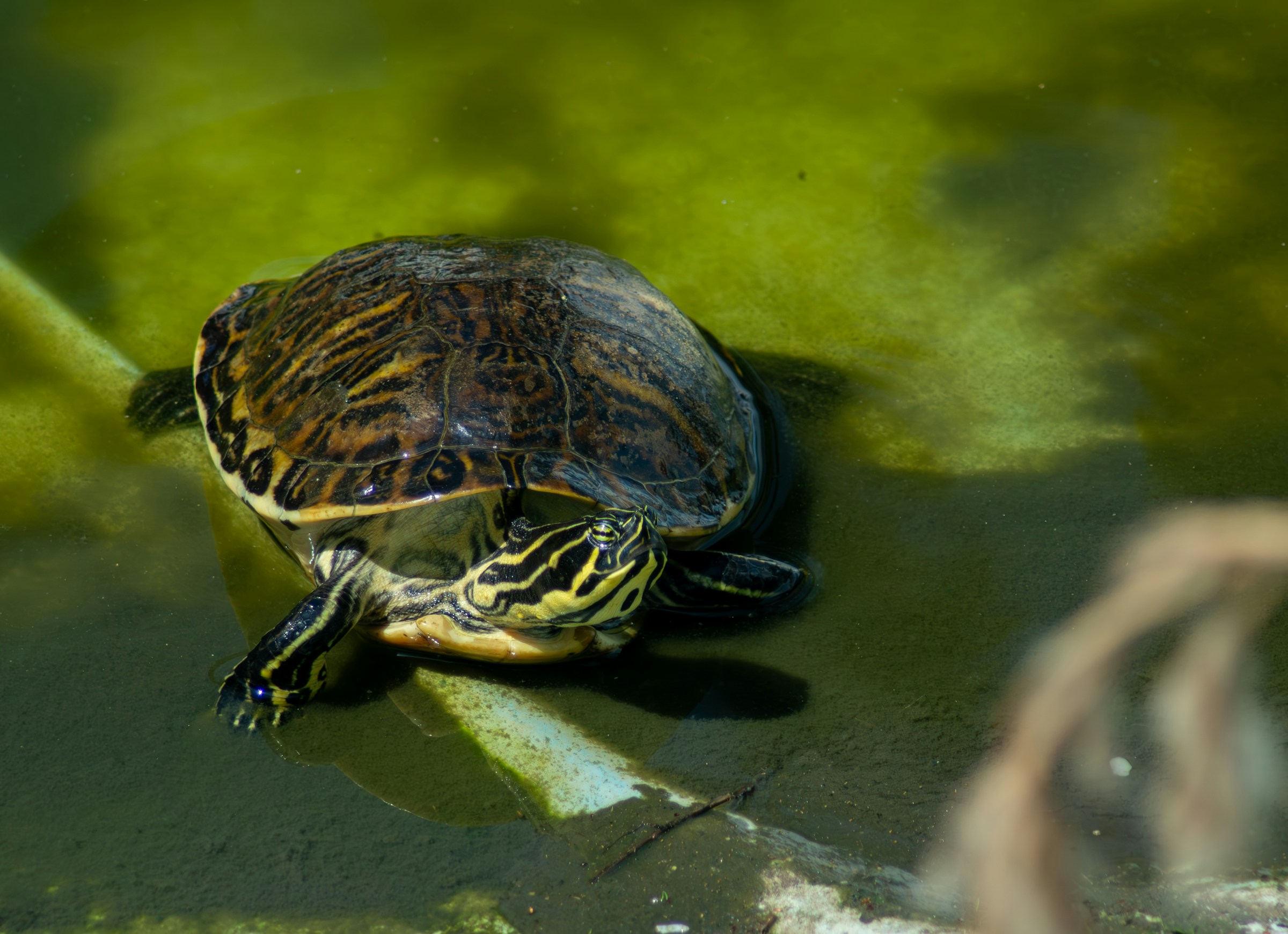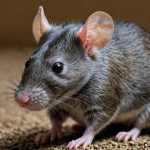Ultimate Guide to Caring for Your Pet Turtle in a Home Environment: Tips for Optimal Well-Being
Understanding Your Turtle’s Needs
Before you bring a turtle home, it’s crucial to understand the specific needs of your new pet. Turtles, whether they are aquatic, semi-aquatic, or terrestrial, have unique requirements that must be met to ensure their health and happiness.
Choosing the Right Turtle Species
When selecting a turtle species, it’s important to consider several factors, including the space you have available, the climate you live in, and the level of care you can provide. For example, red-eared sliders are popular pets but require a large tank with ample water and a basking area.
Additional reading : Identifying the Initial Symptoms of Diabetes in Your Beloved Cat: A Complete Guide
Here are a few popular turtle species and their specific needs:
| Turtle Species | Habitat Requirements | Diet | Special Needs |
|---|---|---|---|
| Red-Eared Slider | Large tank (over 100 gallons), water filter, UVB lighting | Omnivorous (commercial pellets, fresh vegetables, proteins) | Regular water changes, basking area |
| Hermann’s Tortoise | Secure outdoor or indoor enclosure, shallow water bowl | Herbivorous (leafy greens, fruits) | Weekly habitat cleaning, basking platform |
| Common Musk Turtle | 40-50 gallon tank, powerful filtration, heated water | Carnivorous (snails, shrimp, fish) | Basking area (100°F), humidity control |
| Eastern Spiny Softshell | Large aquatic environment, sand and mud bars | Omnivorous (aquatic plants, proteins) | Fast-flowing water, basking spots near water |
Consulting with a Veterinarian
It’s essential to establish a relationship with a veterinarian who has experience in treating reptiles before bringing your turtle home. This will ensure that you have the right advice and care for any health issues that may arise.
Also read : Essential Guide to Caring for a Pet Rat with Respiratory Problems: Tips for Optimal Health
Setting Up the Perfect Habitat
Creating the right habitat for your turtle is vital for its well-being. Here are some key elements to consider:
Aquatic Turtles
For aquatic turtles like the red-eared slider and the eastern spiny softshell, a large tank with a robust filtration system is necessary. Here are some tips for setting up their habitat:
- Tank Size: Ensure the tank is large enough to accommodate your turtle’s growth. For red-eared sliders, a tank that can hold over 100 gallons of water is recommended.
- Water Quality: Maintain good water quality by using a water filter and conditioner to remove chlorine and chloramine from the water. Regular water changes are also crucial.
- Lighting: Provide both UVB lighting and a basking light to mimic natural sunlight. This is essential for calcium metabolism and vitamin D3 production.
Semi-Aquatic and Terrestrial Turtles
For semi-aquatic and terrestrial turtles like the Hermann’s tortoise and the common musk turtle, the habitat setup is different:
- Enclosure Size: Ensure the enclosure is large enough to provide ample space for movement. For Hermann’s tortoises, a secure outdoor or indoor enclosure with a shallow water bowl is recommended.
- Temperature and Humidity: Maintain appropriate temperature and humidity levels. For example, common musk turtles need a basking area at 100°F and a humid environment.
- Basking Area: Provide a dedicated basking platform under a heat source. This is crucial for ectotherms like turtles to regulate their body temperature.
Diet and Nutrition
The diet of your turtle varies significantly depending on the species.
Aquatic Turtles
Aquatic turtles like red-eared sliders have a diet that shifts from carnivorous in their youth to more herbivorous as they mature:
- Commercial Pellets: Use these as a base for their diet.
- Fresh Foods: Supplement with a variety of fresh vegetables, fruits, and proteins like fish and shrimp.
Semi-Aquatic and Terrestrial Turtles
For semi-aquatic and terrestrial turtles, the diet can be quite different:
- Hermann’s Tortoise: Herbivorous diet consisting of leafy greens, fruits, and flowers.
- Common Musk Turtle: Carnivorous diet including snails, shrimp, fish, and aquatic plants.
Here are some general dietary tips:
- Variety: Ensure a varied diet to prevent nutritional deficiencies.
- Feeding Outside the Tank: Feed your turtle outside its tank to maintain water quality and prevent contamination.
- Avoid Overfeeding: Prevent obesity and excessive waste by avoiding overfeeding.
Health and Hygiene
Maintaining the health and hygiene of your turtle’s habitat is crucial.
Cleaning the Habitat
Regular cleaning of the habitat is essential:
- Weekly Cleaning: For aquatic turtles, change a portion of the water weekly and clean the tank with a reptile habitat cleaner.
- Basking Platform: Clean the basking platform regularly to prevent the buildup of bacteria and algae.
Handling and Hygiene
When handling your turtle, it’s important to maintain hygiene:
- Vinyl Gloves: Use vinyl or latex gloves to handle your turtle and clean its habitat to prevent the transmission of diseases.
- Hand Washing: Always wash your hands before and after handling your turtle to reduce the risk of salmonella infection.
Here are some health checks to perform regularly:
- Shell Condition: Check for any signs of damage, such as cracks or soft spots.
- Eye Health: Ensure the eyes are clear, bright, and free from discharge.
- Respiratory Health: Check for any signs of respiratory issues like wheezing or nasal discharge.
- Body Condition: Ensure the body is firm and well-rounded without any visible injuries or abnormalities.
Tips for Optimal Well-Being
Here are some additional tips to ensure your turtle’s optimal well-being:
Providing Natural Sunlight
If possible, provide your turtle with a few hours of natural sunlight a day. However, if this is not feasible, ensure you have adequate artificial lighting that includes UVB rays.
Creating a Basking Area
A basking area is essential for all turtles. It should be located under a heat source and provide a temperature gradient for your turtle to regulate its body temperature.
Ensuring Proper Temperature and Humidity
Maintain the right temperature and humidity levels for your turtle species. For example, common musk turtles need a basking area at 100°F and a humid environment.
Avoiding Common Mistakes
- Never Take Turtles from the Wild: This can harm both the turtle and the ecosystem.
- Research Before Bringing Home: Understand the specific needs of your turtle species before making a decision.
- Check Local Laws: Ensure it is legal to keep the particular turtle species as a pet in your state.
Caring for a pet turtle is a significant commitment, but with the right knowledge and preparation, it can be a highly rewarding experience. Here are some final thoughts from Dr. Kelleher:
“With water turtles, it’s all about water quality and proper food. Make sure you have the right conditions, and you can keep your turtle happy and healthy for many years,” says Dr. Kelleher.
By following these guidelines, you can create a nurturing environment that meets all the needs of your pet turtle, ensuring a long and healthy life for your new companion.
Detailed Checklist for Turtle Care
Here is a detailed checklist to help you in caring for your pet turtle:
- Habitat Setup:
- Large tank or enclosure
- Water filter and conditioner
- UVB lighting and basking light
- Basking platform
- Shallow water bowl (for terrestrial turtles)
- Sand and mud bars (for aquatic turtles like eastern spiny softshell)
- Diet:
- Commercial pellets
- Fresh vegetables and fruits
- Proteins like fish and shrimp
- Variety of foods to prevent nutritional deficiencies
- Health Checks:
- Shell condition
- Eye health
- Respiratory health
- Body condition
- Hygiene:
- Weekly habitat cleaning
- Use of vinyl gloves
- Hand washing before and after handling
- Veterinary Care:
- Establish a relationship with a reptile-experienced veterinarian
- Regular check-ups
By adhering to these guidelines and tips, you can ensure that your pet turtle lives a happy, healthy life in its home environment.













